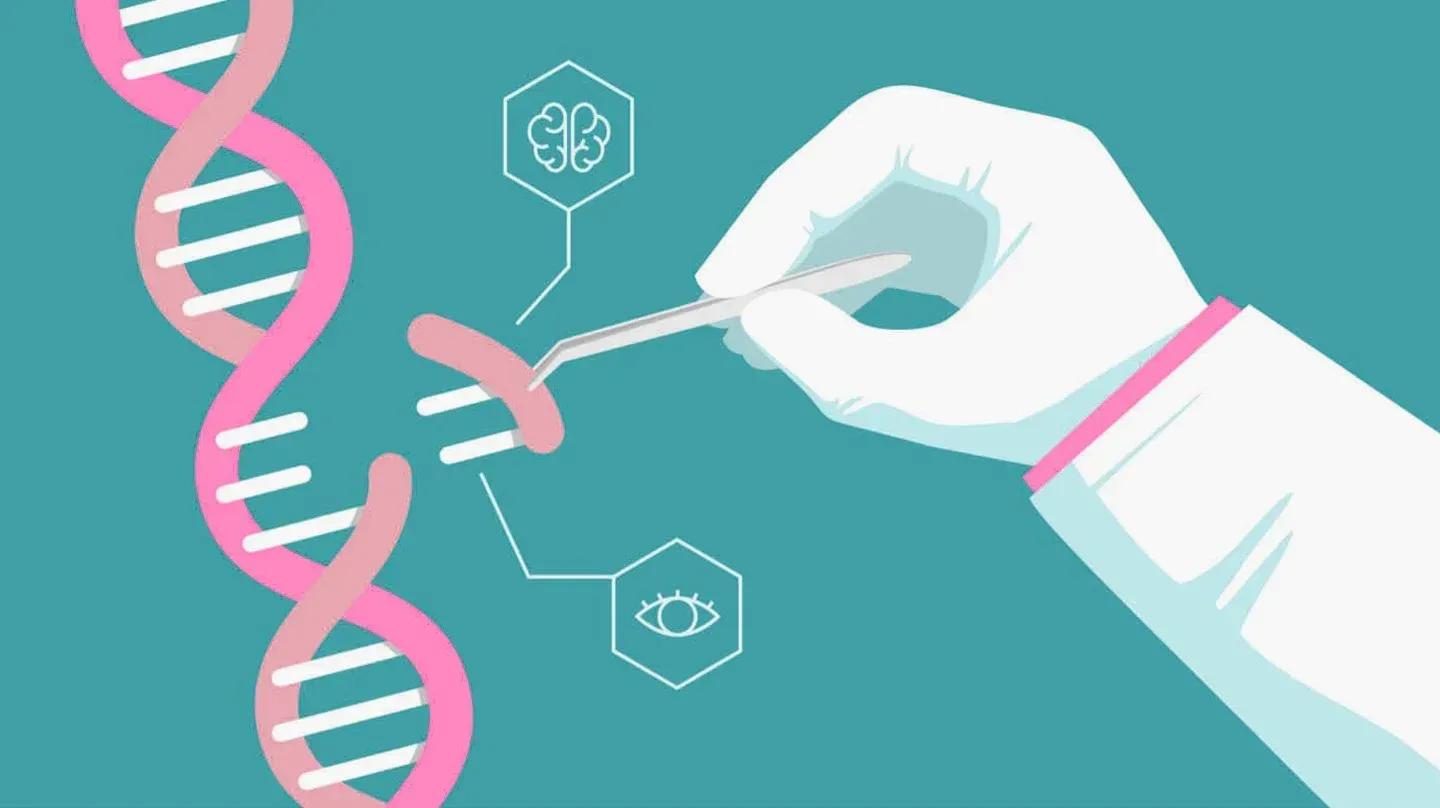Representation of Genetic Modification
Genetic manipulation and modification have been part of humanity for much longer than most people imagine. From crops and selective livestock, in one way or another, the most basic concepts of genetic manipulation were already being implemented. Choosing to plant only seeds from the best crops or selecting a large, strong stallion to be the only one to breed with the rest of the livestock. While this may seem like an obvious practice—and it is—this is genetic modification through selective evolutionary development. Gradually, humanity made this practice a much more precise and technical process. Gregor Mendel, in the 19th century, was probably the first to propose genetic inheritance, and thanks to his work, the well-known Mendel Laws were proposed, which simply explain the attributes expected from the inheritance between the crossing of different parents. This means that we have understood genetics for a long time, but today we not only understand it quite well but have also developed the ability to modify it as we see fit. Nowadays, dozens of examples of genetic modification are already being used; for instance, “knockout” mice, specifically modified to not express a certain gene, of which there are several types depending on the model. It has also been used for other things, such as proteins like green fluorescent protein (GFP), which comes from a jellyfish, and today is used as one of the key markers to observe the expression of specific genes. This is done by introducing this protein into the genome of something like a microorganism and linking its expression, for example, to an insulin production gene. What this allows is to easily observe if your model is doing what you want, since if they shine green under ultraviolet light, you know they are also producing insulin. There are several such examples; the world of recombinant proteins and genetically modified animal models is vast and has allowed humanity to make immense leaps in scientific and technological advancements, with one of the most famous being the ability to use bacteria to produce human insulin, instead of using hundreds of pigs to obtain just a fraction, greatly improving the quality of diabetes treatment. A rather recent example of the benefits of genetic engineering came in the form of mammoth mice. It sounds incredible, and in part it is; the company Colossal Bioscience has undertaken the mission to de-extinct several species that have become extinct throughout human history, the main one being the mammoth (Mammuthus primigenius), and they have taken an important step toward achieving this. In reality, they are still far from replicating a living mammoth, but by modifying around 7 genes in mice, they have managed to recreate a fur very similar to that shown by these prehistoric giants. The “woolly mouse,” as they have called it, is by no means a step toward a mammoth, but it is a promising step. The journal Nature reported the following, “As part of their effort to design elephant-like creatures similar to mammoths, Colossal and its collaborators are working to find genetic variants that contributed to key traits of mammoths, such as hairy fur, cold tolerance, and excess fat. To do this, they compare genomes extracted from the remains of dozens of mammoths and other living and extinct relatives of these creatures, looking for changes that alter proteins and evolved in the mammoth lineage.” [1] This is what allowed us to have these new mice, a very interesting use of genetic modification, and for those who ask, "And why do we want mammoths?" They do not realize the incredible ecological impact that standardizing de-extinction techniques could have on our planet.

Alongside all these advances and discoveries, one of the most relevant was CRISPR, or Clustered Regularly Interspaced Short Palindromic Repeats, according to its English acronym. This technology is one of the most precise tools in genetic modification and was derived from the innate defense system of certain bacteria against phages or bacterial viruses, just as GFP is a natural component of another organism that can be harnessed to do amazing things. But just as it can do so much good, CRISPR has been widely criticized, as it is a tool that inevitably raises the conversation about genetic modification in humans. Where the question arises: to what extent can we use these tools correctly or appropriately? The main argument in favor always goes hand in hand with the elimination of genetic diseases, things like dwarfism, spinal muscular atrophy (SMA), or even trisomy 21, or Down syndrome as it is commonly known. Regarding the latter, a recent study demonstrated a way in which the CRISPR-Cas9 system could somehow eliminate the extra chromosome responsible for Down syndrome; it is not a definitive cure, and much research remains before it can be declared a real therapy, but it is a gigantic leap, and what this group of scientists did is definitely impressive. Hashizume et al. demonstrated the enormous potential that tools like CRISPR have for the benefit of humanity. [2] Another example is the treatment of SMA, a recessive genetic disorder that causes severe neuromuscular disorder. It arises from the functional loss or deletion of the SMN1 gene (in English, survival motor neuron) responsible for synthesizing the survival motor neuron protein (SMN), essential for the viability of motor neurons. [3,4] The absence of SMN causes degeneration of the brainstem and spinal motor neurons, leading to atrophy of skeletal muscle and even premature death. In addition to the motor importance of the SMN protein, it participates in several important physiological processes in all tissues such as spliceosome formation, the synthesis of ribonucleoproteins, mRNA trafficking, endocytosis, and autophagy, among others. Because of this, SMA is considered a multisystem disease that can affect the function of many organs or systems like the heart, the pancreas, and the immune system, causing an average lifespan of 2 years. [3] Its treatment is not easy, but a gene therapy has been developed that has had very good effects; the drug in question has the commercial name Zolgensma, and its real name is Onasemnogene abeparvovec. Zolgensma is a recombinant non-replicating AAV9 (Adeno-Associated Virus 9) that contains DNA complementary to the human SMN gene controlled by the chicken β-actin CMV/enhancer hybrid promoter. The mechanism of action of Zolgensma is mainly based on its vector, AAV9, from which its DNA is removed to introduce a copy of the functional SMN1 gene. This vector has the capacity to rapidly distribute throughout the body reaching all tissues. These vectors deliver functional copies of the SMN1 gene to motor neurons, where the drug is stored in the nucleus of these cells and does not become part of their genetic material. This new gene provided by Zolgensma tells the neurons to start producing the SMN protein, a process that occurs multiple times throughout the body, so that all cells start to produce this protein. Once the product is delivered, the vectors are destroyed and gradually excreted by the body. [5]

These are just a couple of examples of what gene therapy can do for us, whether directly modifying the human genome or simply harnessing different tools to create medications that can ensure the lives of people born with death sentences like SMA. Of course, this discussion is not black and white; gene therapy should not be taken lightly; after all, we do not know the long-term consequences it may have. For this reason, and unlike other media, I do not talk about the cure for Down syndrome, because that is not what the research states, but the path looks good; however, there is still much to travel because declaring such large things is irresponsible, and is part of what scares people about things like genetic modification. But besides people thinking that transgenic wheat is bad and they prefer their food free of GMOs (genetically modified organisms), or believing that choosing the eye color of their children is irresponsible or dangerous or goes against their beliefs, genetic engineering has very real and useful uses that can help hundreds of thousands of people, and dismissing an entire field of science without knowing well its applications, benefits, or risks is equally irresponsible. Moreover, you may not know, but yes, you received an mRNA vaccine during the COVID19 pandemic; you have already received a genetic treatment, and at least for my part, 5 years later, I feel good, and I am happy to have received it, even if theoretically I was part of a large-scale clinical study. I will not say that everything is perfect; there are risks, there are mistakes, and there are people who do not look for the common good but their own benefit. However, at least in fields like this, I can do nothing but hope that the good outweighs the bad, and that genetic modification passes from being a taboo and fearful concept to something as common and effective as getting vaccinated.
References:
1. Callaway E. Meet the “woolly mouse”: why scientists doubt it’s a big step towards recreating mammoths. Nature [Internet]. 2025;639(8054):284–5. Available at: http://dx.doi.org/10.1038/d41586-025-00684-1
2. Hashizume R, Wakita S, Sawada H, Takebayashi S-I, Kitabatake Y, Miyagawa Y, et al. Trisomic rescue via allele-specific multiple chromosome cleavage using CRISPR-Cas9 in trisomy 21 cells. PNAS Nexus [Internet]. 2025;4(2):gaf022. Available at: http://dx.doi.org/10.1093/pnasnexus/pgaf022
3. Menduti G, Rasà DM, Stanga S, Boido M. Drug Screening and Drug Repositioning as Promising Therapeutic Approaches for Spinal Muscular Atrophy Treatment. Front Pharmacol. 2020;11(November).
4. Ojala KS, Reedich EJ, Didonato CJ, Meriney SD. In search of a cure: The development of therapeutics to alter the progression of spinal muscular atrophy. Brain Sci. 2021;11(2):1–39.
5. How it works ZOLGENSMA [Internet]. Novartis Gene Therapies, Inc. 2021 [cited Mar 12, 2025]. Available at: https://www.zolgensma.com/how-zolgensma-works


Comments